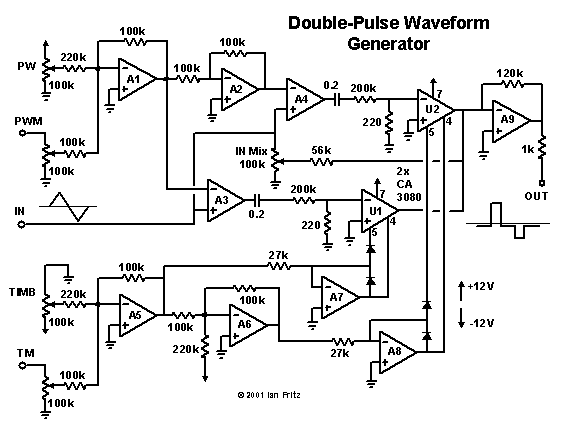
via
this auction
"OK, by now, everyone knows the Crumar Spirit was designed by some of the Moog folks, namely Dr Moog, Tom Rhea, and Jim Scott. What's never been explained is how or why. That's where I come in. This is how it might have happened...
Let's first set the stage.

The year is 1982. The monophonic Prodigy and Rogue were still in production. Moog's attempt at a less-knobby synth (the Source) had been released the year before. The powerful but problematic MemoryMoog had finally started to ship and everyone involved really needed a break because of all the problems. New development had temporarily ground to a halt as all hands came on board to salvage the MemoryMoog effort.
During this time, the Rhodes Chroma had also recently been released.
Three Moog folks - Dr Moog, Tom Rhea, and Jim Scott decided to take a short holiday overseas to unwind and reset. They chose Italy as their destination and set off on their trip.

Meanwhile...
In Italy, Crumar had the DS-2 and Performer synths out there. They had also teamed up with a New York based firm to create the GDS and Synergy but they were having as many problems with them as Moog and ARP did with their recent polysynths.
So, the three Moog employees are in Italy, touring around and checking out the local culture. A chance meeting with Mario Crucianelli kickstarts an idea for a new synth. Moog as a company is stretched too thin and is too worn out to take on any new R&D. Dr. Moog and friends discuss features that they'd like to see. Since this isn't going to be branded as a Moog, there is some more freedom to borrow ideas from other synths and to vary from the traditional Moog designs. They have had good luck with the CEM 3340 and 3360 ICs in the MemoryMoog and the Chroma was using the 3350 VCF to create some unusual routings and new sounds. Rather than worry about licensing a Moog filter for this product, the team decided to go off on a new track and try a pair of 3350's and provide separate control over each filter chip.

The idea for a monosynth that could sound traditional or radically modern was born and the Spirit is the result.
Well, that's how it might have happened...
Let's get back around to the auction now.
I have a Crumar Spirit, serial # 62, that's been cleaned and calibrated. In addition to the synth (110 volts) and power cord, I'm including the owner's manual and schematics. In addition, I sketched out the trimpot locations and names for the VCO board to make future calibrations easier. As an added bonus (I'm all about giving you guys bonuses), I'm including 2 CEM 3340 VCO ICs, 1 CEM 3350 filter IC, and 2 CEM 3360 VCA ICs. So you'll never have to worry about CEMs again."
 go here. Click on NAMM Shows/Winter and go from there.
go here. Click on NAMM Shows/Winter and go from there.

 go here. Click on NAMM Shows/Winter and go from there.
go here. Click on NAMM Shows/Winter and go from there.
 via this auction
via this auction Bring fresh sounds to your beats with the MFB-503! The third drum-computer in MFB's 50x series introduces a more powerful sound and a new operational concept. Due to their analogue origin, kick, snare and toms can be edited in various ways. The drumkit is completed by the two sampled instruments cymbals (crash, ride available) and hi-hats (two variations). In addition, the samples of each group can be continuously mixed to create further sound variations. sounds can be saved individually as well as complete drumkits. The instruments are triggered by an internal step-sequencer.
Bring fresh sounds to your beats with the MFB-503! The third drum-computer in MFB's 50x series introduces a more powerful sound and a new operational concept. Due to their analogue origin, kick, snare and toms can be edited in various ways. The drumkit is completed by the two sampled instruments cymbals (crash, ride available) and hi-hats (two variations). In addition, the samples of each group can be continuously mixed to create further sound variations. sounds can be saved individually as well as complete drumkits. The instruments are triggered by an internal step-sequencer. This tr-style sequencer uses the beloved led-per-step method to set the selected instruments. There are 90 memory locations for patterns that can be further combined into 90 songs. Instruments are edited by four master rotary-encoders with corresponding displays."
This tr-style sequencer uses the beloved led-per-step method to set the selected instruments. There are 90 memory locations for patterns that can be further combined into 90 songs. Instruments are edited by four master rotary-encoders with corresponding displays."













